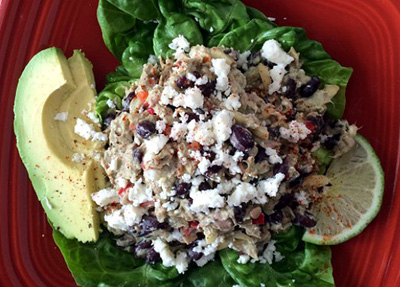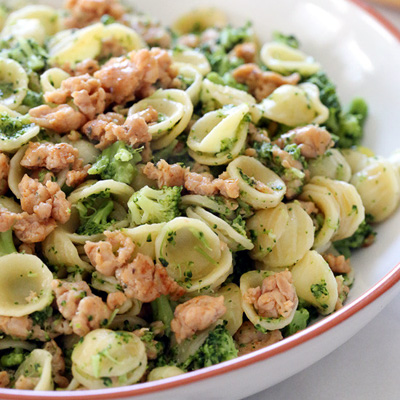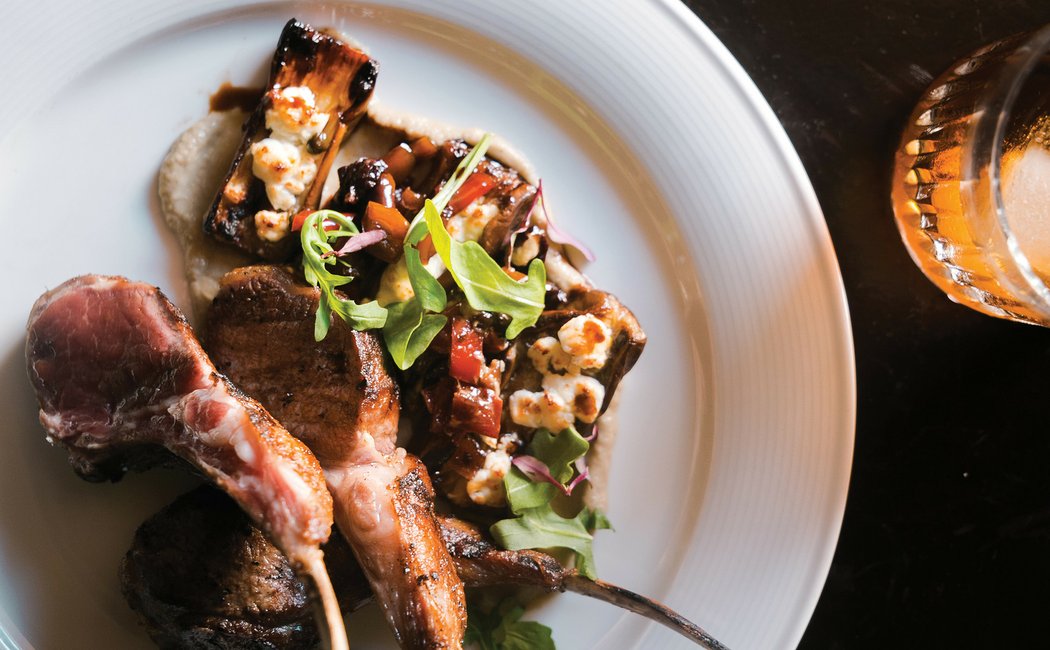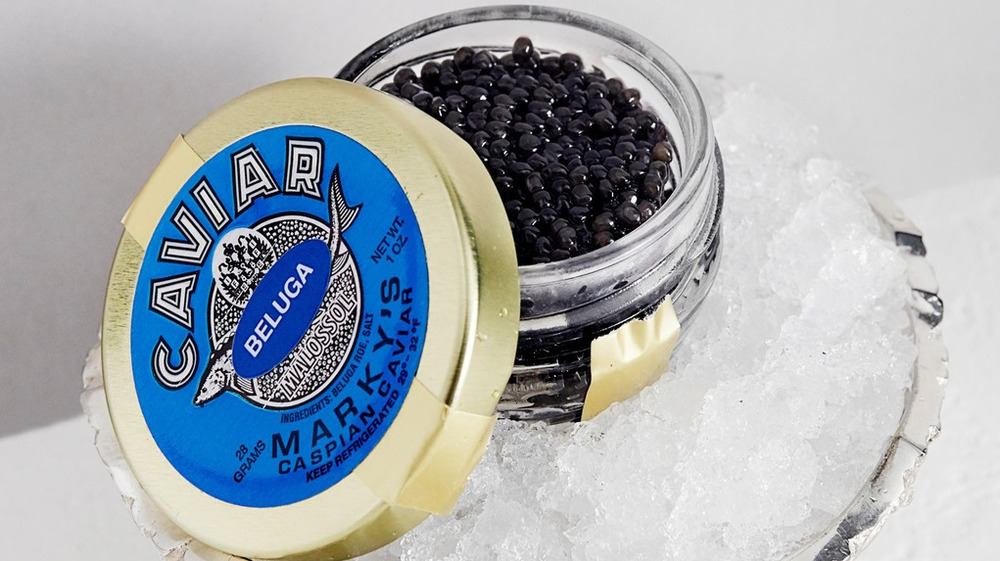National Nutrition Month 2019: Healthy and Sports Nutrition with Marky’s
Spring is the best season to start fulfilling our new year’s resolutions. The year has just begun. Let’s not count the two months of unpredictable weather and annual reporting. We still have lots of time to realize our aspirations. What are they? INSIDER claims that in 2019 most adult Americans have promised to form and stick to healthy eating and activity habits. Good luck to us all with that!
Probably, this INSIDER’s article with all the eloquent statistics got into the hands of some leading guys from the Academy of Nutrition and Dietetics. This year, within the National Nutrition Month campaign they decided to increase our awareness of the importance of healthful nutrition and active lifestyle, honoring NNM as its own theme.
So, in March, get ready to convert into a smart eater and willing regular of the gym.
Hats off to you if you braced yourself back in January and have already overcome your seduction to give up becoming a healthier and happier version of yourself. You’re on the right track and you must be really proud of the results you have achieved by March. Keep it up!
But even if everything you have by March is just an accurate list of ambitious resolutions, there’s no better time than now to start bringing them into life.
Here is what the US Academy of Nutrition and Dietetics recommends us.
Nutritious daily menu can and should be simple.
This is sound advice for people who have to schedule even their sleep.
Unless you need to surprise your relatives or friends with something out of this world tonight, choose from dishes that take 20-30 minutes to cook and contain earthly ingredients, which you can buy at any grocery store.
If you don’t have enough time to cook and prefer to eat out or order ready-made meals, you’d better stay away from fast food and opt for restaurants with well-balanced menus.
Culinary experiments are very welcome.
The Academy’s dietitian nutritionists encourage to use different cooking techniques and add more flavors when it comes to preparing casual workday or traditional family meals.
To give you an idea, if your dearest and nearest prefer pan-fried duck breasts, next Sunday try roasting the meat in the oven. Add some chestnuts, mushrooms, or sun-dried tomatoes. Season with Mediterranean spices to taste. That’s it and that’s still healthy.
Roasted meat provides more nutritional benefits than pan-fried meat. Plus, while the oven is taking care of the duck, you have about half an hour to cook a beautiful vegetable salad (or to check your e-mail if you are such a big cheese).
Clean cooking is a key to healthy eating.
Wash your hands before and after the meal. This is one of the very first lessons we teach our children, and our parents taught us. Let’s not forget it, no matter how old we grow.
While you should eat with clean hands, you should also cook with clean hands. Before handling meats, dairy, greens, and fruit, wash your hands with warm soapy water for 10-20 seconds. Do the same after the meal is ready and before you serve it.
If you use any small kitchen appliances, like can openers or blenders, take them apart to clean thoroughly. At least once in one or two months clean your refrigerator.
Creative clutter in your house remains harmless as long as you don’t let it into the kitchen.
Physical activity should appear in our daily to-do lists.
The U.S. Department of Health and Human Services has estimated that adults should spend at least 150 minutes per week on participating in physical activities of moderate intensity.
In other words, you should find at least 20-25 minutes per day to jog around the park or do some simple exercises in your living room. One third of an hour isn’t a lot of time, is it?
Sticking to all these recommendations seems to be and actually is easy. The idea behind them is that healthy lifestyle isn’t something we should switch to from our busy everyday routines. Our busy everyday routines will turn into healthy lifestyle themselves if we pay a bit more attention to what we eat and how much we move.
Supporting this idea, Marky’s has also joined the 2019 National Nutrition Month celebration with the rich selection of healthful delicacies that will add more taste and nutritional value to your daily diet.
Juggling a brain-racking job, moderate physical activity, and happy personal life requires a menu based on balance, not on restriction. And maybe, by balancing your menu, you will successfully balance your whole busy life.
Let’s try!
Omega 3s for Brain Health
To function effectively and help us survive in this world, our brain needs various nutrients. Since it is the brain that regulates our mental and physical activity, this organ also makes us feel hungry so that we provide it with a new portion of “fuel.” (Yes, it’s all in our heads, not in our stomachs.)
Apparently, the more high-quality fuel we use, the better our brain will work. So, for the brain omega-3 fatty acids and the whole set of vitamins are like the premium petrol for a racing car.
Fish and seafood are the richest sources of omega 3s:
- Salmon, cod, tuna, anchovies and sardines
- Oysters and mussels
- Black caviar.
But you can also choose from plant options:
- Walnuts
- Flaxseeds, hemp seeds and chia seeds
- Brussels sprouts.
Now, let’s combine tuna and walnuts in a delicious and nutritious 4-serving salad. If you open a can of tuna alone, cooking the salad will take you about 20 minutes. But if you have someone who can do it for you, you will serve it in 15 minutes.

Ingredients:
- 2 cans water packed tuna, drained
- 1 can black beans, drained and rinsed
- ½ c. cottage cheese
- 1/4 c. dried walnuts or 2 tbsp. walnut pesto
- 3 tbsp. minced onion
- 2 avocados, sliced.
- 3/4 c. Greek yogurt, 0% fat
- 1 tsp. honey
- 2 tbsp. lemon or lime juice, freshly squeezed
- 1/4 tsp. chili powder or paprika
- 1/2 tsp. salt
- 1/8 tsp. black pepper
Directions:
- In a blender, pulse the yogurt, honey, lemon or lime juice, and seasonings until smooth. Set aside.
- In a bowl, mix the tuna, beans, cheese, walnuts or walnut pesto, and onion. Toss together, breaking up large chunks of the fish and cheese. Add the dressing and toss lightly.
- Serve cool, on leaf lettuce with avocado slices.
Proteins for Strong Muscles
Even that recommended moderate physical activity that should take you 20-25 minutes per day requires you to reconsider your everyday diet. If you are going to turn morning jogging into a strong habit, your body will need more natural proteins.
The standard Dietary Reference Intake of protein is 45-55 grams for the average adult sedentary man or woman. Where can you take this amount from?
Here are the powerhouses of protein:
- Fish
- Poultry
- Dairy products, including cheeses
- Eggs
- Mushrooms
- Nuts and seeds.
Catch another 20-minute protein-rich recipe for scrumptious creamy pasta with tender chicken sausage. (You can substitute pasta for brown rice.)
By the way, it is a great dish to cook in bulk if this week you are going to be as busy as a beaver. The recipe is provided for eight servings.

Ingredients:
- 12 oz. uncooked pasta
- 14 oz. Italian chicken sausage, with casing removed
- 1/4 c. Pecorino Romano or Parmesan, grated
- 16 oz. fresh broccoli florets, without stems
- 5 cloves garlic, chopped
- 2 tbsp. olive oil
- salt and pepper to taste
Directions:
- In a large pot, boil water for the pasta.
- Meanwhile, in a large skillet, brown the sausage over medium-high heat. Break the meat up as it cooks with a wooden spoon. Remove the skillet from heat.
- Add the pasta into the boiling water and cook according to the instructions al dente. Add broccoli. Drain pasta and broccoli.
- Return the pot to the stove. Set high heat. Add the olive oil and chopped garlic. Cook until the garlic gets brownish, reduce the heat, and add the pasta with broccoli and sausage back to the pot.
- Mix well, smashing large broccoli chunks.
- Season with the olive oil and sprinkle with the cheese. Add salt and pepper to taste.
- Serve with some additional grated cheese on the side.
Healthy Carbs for Optimistic Mood
Balanced menus never exclude carbohydrates. These chemicals boost our bodies with energy and improve our mood.
If you aren’t a sportsperson, carbs prevail in your menu. But that’s okay. There are only two things you should keep an eye on. Firstly, your daily intake of carbs must not be higher than the norm – 220-320 grams per day. (And now compare these numbers with the ones for proteins.)
Secondly, you should always stay aware of the source from which your carbs come into you. Avoid plain sugar and get healthy carbohydrates from:
- Fruit, berries, and vegetables
- Grains, beans, and legumes (like lentils)
- Pasta and spaghetti
- Fruit and berry preserves or purees (like these strawberry or kiwi purees without sugar).
A balanced diet and regulated physical activity make a foundation of what we call “healthy lifestyle.” But we shouldn’t forget that food and movement are only the two elements of our multi-faceted lives.
Healthy lifestyle also means communication with the people we love, gaining new knowledge and skills, seeing new places, and doing plenty of other useful things. Bet at least some of them are your resolutions for this year. And you have already started to fulfill them. Fair play to you.
Happy National Nutrition Month from Marky’s! May you and your dearest stay healthy.
Take care!






